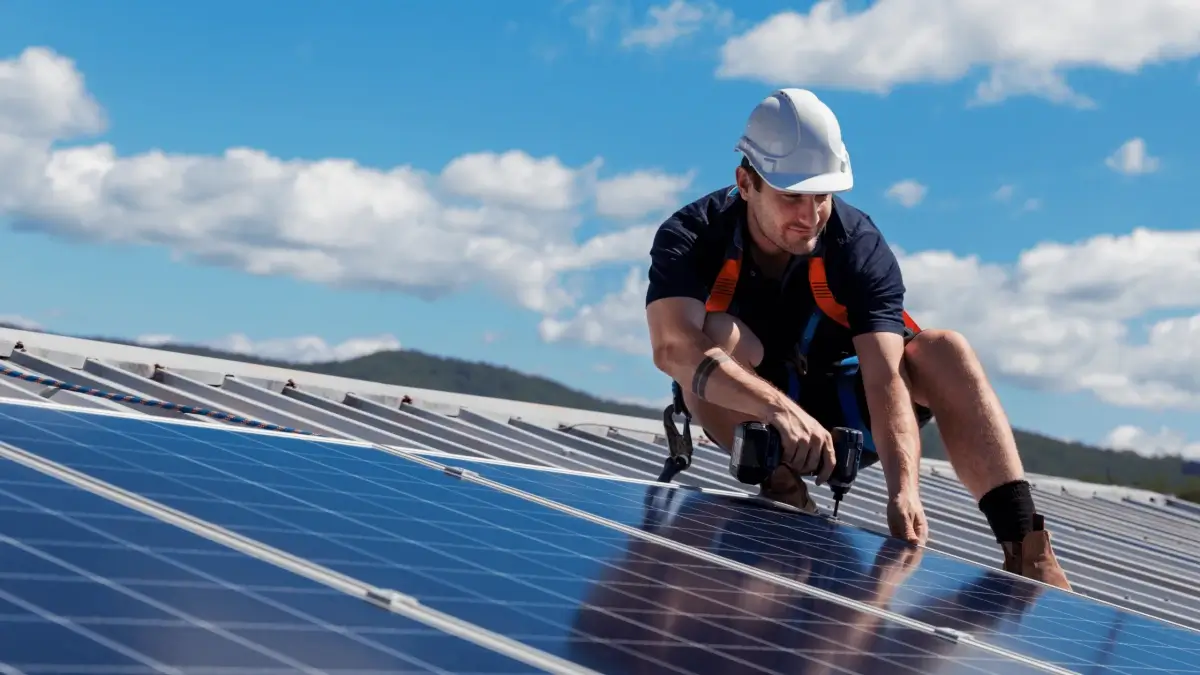Harnessing solar energy efficiently starts with right positioning of your solar panels. Whether you’re a homeowner, a business owner, or just curious about solar energy, understanding the best direction and tilt angle for solar panels can maximize your energy generation throughout the day and total savings.

Let’s explore the important details like direction and tilt angle and make your solar setup shine for maximum energy use! 🌞☀️
Why Direction and Tilt Angle Matter? ⚡
Solar panels convert sunlight into electricity, so the more direct sunlight they receive, the better they perform. The direction (azimuth) and tilt angle (inclination) of your panels affect how much sunlight they capture throughout the year.
- Direction: Determines how long the panels are exposed to direct sunlight during the day.
- Tilt Angle: Affects how effectively the panels receive sunlight at different times of the year.
Finding the optimal setup ensures that your solar system produces the most energy possible, reducing electricity costs and boosting efficiency. 🚀
Best Direction for Solar Panels. 🌍
Northern Hemisphere (e.g., USA, Canada, Europe, India). 🇺🇸🇨🇦🇬🇧
- Face solar panels south for maximum sunlight exposure throughout the day.
- If energy demand is higher in the afternoon, slightly southwest orientation may work better. Just figure-out the whole day sun movement.
Southern Hemisphere (e.g., Australia, Brazil, South Africa). 🇦🇺🇧🇷🇿🇦
- Face solar panels north to capture the most sunlight.
- Adjusting slightly northwest or northeast may help optimize energy usage depending on your needs. Just figure-out the whole day sun movement.
Equatorial Regions (e.g., Singapore, Ecuador). 🌎
- Face panels either north or south since the sun is almost directly overhead year-round. You can even make a cover roof out of it.
- A flat or low-tilt installation may work best for even sunlight distribution.
Best Tilt Angle for Solar Panels. 🔄
The ideal tilt angle depends on your latitude. The general rule is:
- Fixed Panels: Tilt equal to your latitude for year-round efficiency.
- Adjustable Panels: Adjust seasonally for better performance:
- Winter: Latitude + 15° to capture lower sun angles.
- Summer: Latitude – 15° to prevent excessive sunlight reflection.
Tilt Angle Adjustments by Season. 🌞❄️
| Season | Tilt Adjustment |
|---|---|
| Summer | Latitude – 15° |
| Winter | Latitude + 15° |
| Spring/Fall | Equal to latitude |
For example, if you live in New York (latitude ~40° N):
- Fixed tilt: 40°
- Summer: 25°
- Winter: 55°
Optimal Tilt and Direction by Country. 🌏
Here’s a handy table with the best angles and orientations for different countries:
| Country | Latitude Range | Best Tilt (Fixed) | Seasonal Adjustments | Best Direction |
|---|---|---|---|---|
| USA (Central) | 30°-40° N | 30°-40° | +15° winter, -15° summer | South |
| Canada | 45°-60° N | 45°-60° | +15° winter, -15° summer | South |
| UK | 50°-60° N | 50°-60° | +15° winter, -15° summer | South |
| Germany | 47°-55° N | 47°-55° | +15° winter, -15° summer | South |
| Australia | 10°-45° S | 10°-45° | +15° winter, -15° summer | North |
| India | 8°-35° N | 8°-35° | +15° winter, -15° summer | South |
| Brazil | 5°-35° S | 5°-35° | +15° winter, -15° summer | North |
| South Africa | 22°-35° S | 22°-35° | +15° winter, -15° summer | North |
| Japan | 24°-45° N | 24°-45° | +15° winter, -15° summer | South |
| Mexico | 15°-30° N | 15°-30° | +15° winter, -15° summer | South |
Considering Solar Trackers for Maximum Efficiency. 🚀
If you want to go a step further, solar tracking systems can adjust the tilt and direction automatically to follow the sun’s path, improving energy production:
- Single-axis trackers: Adjust tilt throughout the day, increasing efficiency by 10-25%.
- Dual-axis trackers: Adjust both tilt and direction, increasing efficiency by 30-40%, but are more expensive.
These systems work well for areas with high solar potential and long sunny days. 🌅
Practical Tips for Homeowners. 🏡
- Roof-mounted vs. ground-mounted: Roof-mounted panels follow the roof angle, while ground-mounted systems allow for precise adjustments.
- Shade considerations: Ensure no trees, buildings, or other obstacles block sunlight.
- Cleaning & maintenance: Keep panels clean from dust, snow, and debris to maintain efficiency.
- Battery storage: If energy use is high at night, consider solar batteries to store excess daytime energy.
Conclusion. 🎯
The best angle and direction for solar panels depend on your location and energy needs. Generally:
- Northern Hemisphere: Face south.
- Southern Hemisphere: Face north.
- Equator: Face north or south with minimal tilt.
- Tilt: Match your latitude, with seasonal adjustments for better efficiency.
By optimizing your solar panel setup, you can increase energy production, lower costs, and make the most of your investment! 🌞💡
Are you planning to install solar panels? Let us know in the comments! 😊
Leave a Reply